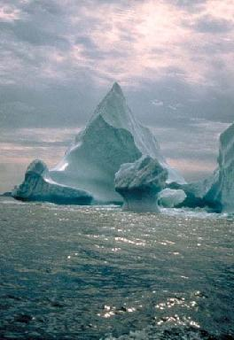NOAA/WDS Paleoclimatology - OMEX2 North Atlantic Seasonal Sediment Trap Foraminifera Data
This archived Paleoclimatology Study is available from the NOAA National Centers for Environmental Information (NCEI), under the World Data Service (WDS) for Paleoclimatology. The associated NCEI study type is Paleoceanography. The data include parameters of paleoceanography with a geographic location of North Atlantic Ocean. The time period coverage is from -43 to -44 in calendar years before present (BP). See metadata information for parameter and study location details. Please cite this study when using the data.
Dataset Citation
- Cite as: Chapman, M.R. (2010-03-17): NOAA/WDS Paleoclimatology - OMEX2 North Atlantic Seasonal Sediment Trap Foraminifera Data. [indicate subset used]. NOAA National Centers for Environmental Information. https://doi.org/10.25921/2xw3-qa25. Accessed [date].
- Please refer to Credit tab for full citation information.
Dataset Identifiers
- doi:10.25921/2xw3-qa25
- noaa-ocean-10456
- NCEI DSI 1200_02
- NCEI DSI 1200_01
ISO 19115-2 Metadata
noaa-ocean-10456
| Search Data |
|
| Download Data |
|
| Distribution Formats |
|
| Ordering Instructions | Contact NCEI for other distribution options and instructions. |
| Distributor |
NOAA National Centers for Environmental Information ncei.info@noaa.gov |
| Dataset Point of Contact |
NOAA National Centers for Environmental Information ncei.info@noaa.gov |
| Dataset Point of Contact | Data Center Contact NOAA World Data Service for Paleoclimatology 828-271-4800 paleo@noaa.gov |
| Coverage Description | Date Range: 1993 CE to 1994 CE; Date Range: -43 cal yr BP to -44 cal yr BP; |
| Time Period | 1993 to 1994 |
| Spatial Bounding Box Coordinates |
West: -13
East: -13
South: 49
North: 49
|
| Spatial Coverage Map |
| General Documentation |
|
| Associated Resources |
|
| Publication Dates |
|
| Data Presentation Form | Digital table - digital representation of facts or figures systematically displayed, especially in columns |
| Dataset Progress Status | Complete - production of the data has been completed |
| Data Update Frequency | Data update frequency not available |
| Supplemental Information | STUDY NOTES: Sediment trap foraminifera data for the North Atlantic (49°N, 13°W) from the OMEX 2 project, at sub-seasonal resolution. ABSTRACT SUPPLIED BY ORIGINATOR: Sediment trap samples from OMEX 2 (49°N, 13°W) provide a continuous record of the seasonal succession of planktonic foraminifera in the midlatitude North Atlantic and reveal a complex relationship between periods of production and specific hydrographic conditions. Neogloboquadrina pachyderma dextral coiling (d.), Globigerina bulloides, and Globorotalia inflata are found in great numbers during both the spring and summer seasons, whereas Globigerina quinqueloba, Globorotalia hirsuta, Globorotalia scitula, and Globigerinita glutinata are associated predominantly with the increase in productivity during the spring bloom. Globigerinella aequilateralis, Orbulina universa, and Globigerinoides sacculifer are restricted to late summer conditions following the establishment of a warm, well-stratified surface ocean. An annually integrated fauna from the sediment trap, comprising ~13,000 individuals, is used to evaluate the accuracy of five faunal-based statistical methods of paleotemperature estimation. All of the temperature reconstruction techniques produce estimates of ~16°C and ~11°C for summer and winter surface temperature, respectively, which are in excellent agreement with regional hydrographic data and suggest that the sediment trap assemblage is well represented in the core top faunas. Analysis of the key species that dominate the OMEX 2 sediment trap fauna, G. bulloides, G. inflata, and N. pachyderma d., based on d18O derived temperatures from North Atlantic core top samples, suggests that seasonal variations in planktonic foraminiferal production are nonuniform across the midlatitudes and that this is likely to complicate reconstructing past seasonal hydrographic dynamics using these taxa. |
| Purpose | Records of past climate and ocean circulation derived from marine sediments. Parameter keywords describe what was measured in this dataset. Additional summary information can be found in the abstracts of papers listed in the dataset citations. |
| Dataset Citation |
|
| Cited Authors |
|
| Originators |
|
| Publishers |
|
| Theme keywords |
Global Change Master Directory (GCMD) Science Keywords
|
| Data Center keywords |
Global Change Master Directory (GCMD) Data Center Keywords
|
| Place keywords |
|
| Use Constraints |
|
| Access Constraints |
|
| Fees |
|
Last Modified: 2024-02-11
For questions about the information on this page, please email: ncei.info@noaa.gov
For questions about the information on this page, please email: ncei.info@noaa.gov

